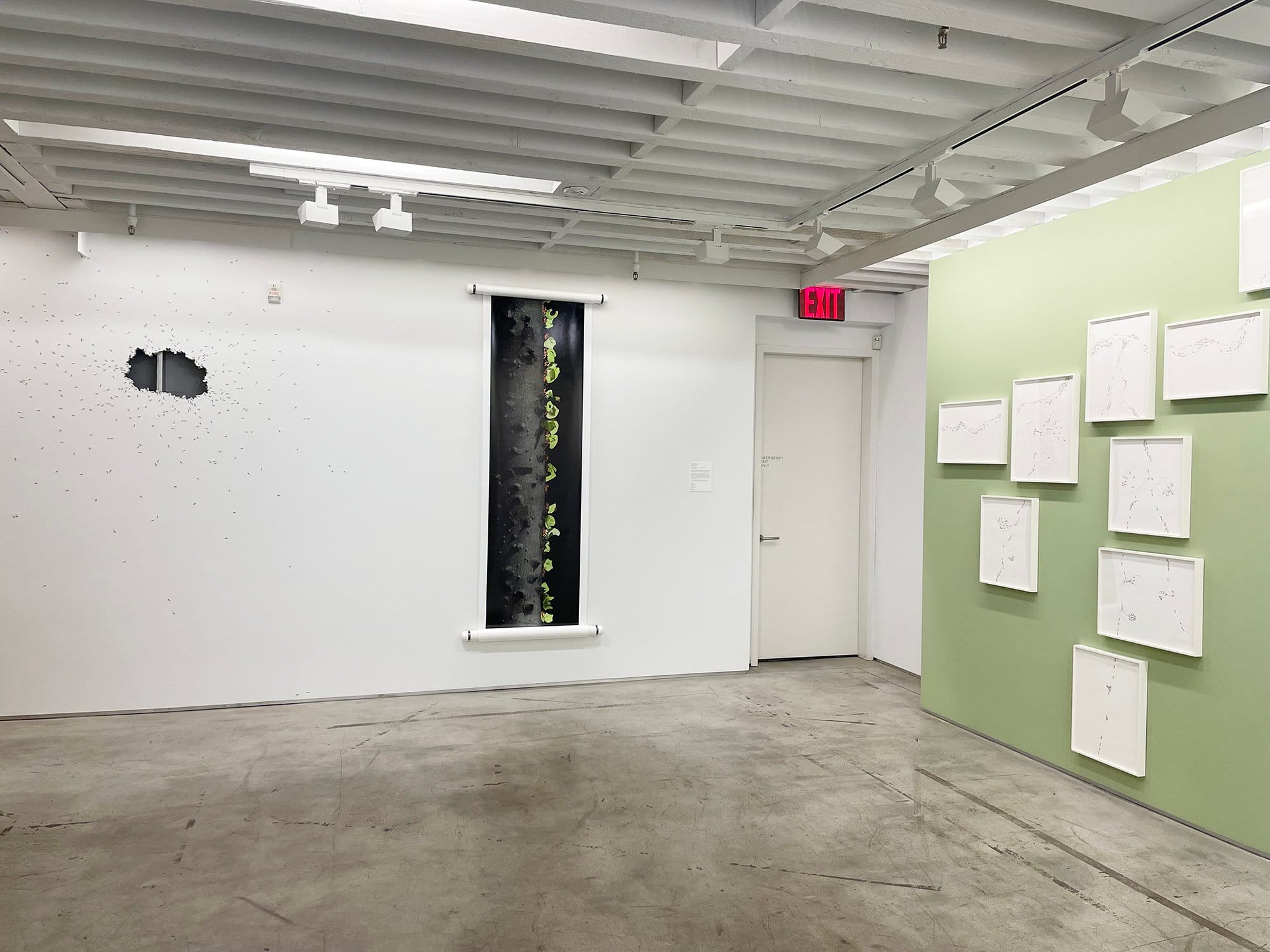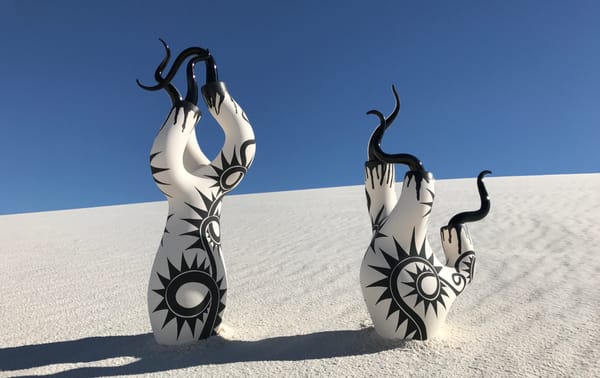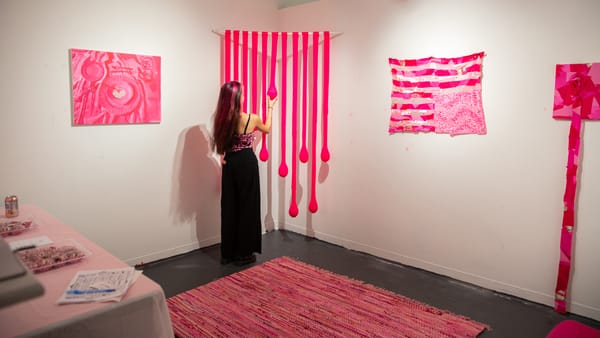What is This? Artwork for Ants?
“Our culture is far richer with the inclusion of other life forms,” says Catherine Chalmers, an artist who collaborates with a collective of wild ants to create tiny, Abstract Expressionist “Antworks.”

While most people do everything they can to keep their homes free of pests like mice, roaches, and ants, artist Catherine Chalmers welcomes them as collaborators in her art practice. Chalmers works with these disliked but ecologically essential organisms in an effort to broaden the horizons of our anthropocentric existence. In her research-based, multidisciplinary project Antworks, Chalmers worked with Leafcutter ants in the Costa Rican rainforest, investigating their aesthetic sensibilities through the plants they choose to trim and take back to their underground colonies in order to cultivate their food source — fungus.
With nearly a decade of onsite research into Costa Rican ant colonies under her belt, Chalmers told Hyperallergic in an interview that she has "always had a sensitivity to the non-human world." She said she gravitated toward entomology because insects are critical to the ecosystem, and their behaviors are very non-mammalian and unfamiliar to us. "They eat their lovers, they're born in a fig and never leave, they just do all these weird things that are so beyond our perspective," she continued. "And because we hate them."

For her 2022 exhibition We Rule at the Drawing Center in Manhattan, Chalmers created a large, organic-looking hole in the drywall with hundreds of drawn ants with paper cuttings spilling out of it, trailing along the walls and pipes of the gallery space. While some of her other endeavors have focused on roaches, houseflies, mantises, and rodents, the artist noteds that her interest in ants stems from the fact that they are inherently social.
"I was doing this project on Leafcutters at the time of the catastrophic rise of social media and instant messaging, and I found that our own patterns of communication were becoming kind of like theirs in terms of immediacy because ants are constantly jabbering to each other using their pheromones, touch, and sound," she said. So on the forest floor in Costa Rica, Chalmers began interacting with hordes of wild ants, observing and even negotiating with them in order to facilitate her project.

Using a macro lens, Chalmers captures the intricacies of their movement, crawling up plant stems and cutting shapes out of speckled pink and green leaves to carry away. Some scenes show a time-lapse of the ants reducing a lush plant into a skeleton of itself, leaving the scene with tortilla chip-like leaf cut-outs that evoke painted collages from an Eric Carle picture book or, as Chalmers notes, an Abstract Expressionist painting. Chalmers tracks the Leafcutters from tree branch to forest floor and documents their colorful clippings before they are brought into the colonies for fungal cultivation. The most exciting part is when multiple ants work together to move larger cuttings — the visual of these insects anticipating and meeting each others' needs as they parade across Chalmers's "film set" is oddly heartwarming.

"I had to figure out how to change the mind of millions of ants, not just one," Chalmers said, recalling the experience of choreographing Antworks. "You know, I can't bribe them like a dog. So I would have to interact with them on some sort of level that made a difference to them."
"I would present them with the plants I wanted them to use and they would go like, 'Oh, we want to take this,' or I wanted to run them over a different route or go over this specific rock," she continued. "I'm always trying to reach that level where their input is what matters as it mixes with mine so that there's this place where the two worlds come together."
Outside of the imminent dangers of climate change, Chalmers's interest in collaborating with insects also comes from a desire to generate cultural interest and explore inclusion beyond the limits of humanity. "Don't we kind of get a little bored about all the navel-gazing that we do?" she asked with a touch of exasperation. "Some of the first acts of art-making, the cave paintings, were a commingling of the human to the non-human world, and that's what gave them such power."
And through these miniature "paintings" the Leafcutter ants parade on their backs or between their pincers, Chalmers forces us to accept how permeable the walls that separate us from nature are.
https://vimeo.com/25976354





